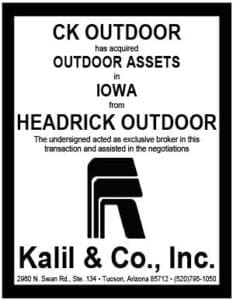The OAAA hosted a webinar July 25 for non-members, to offer a look inside the national trade association. Insider will publish a three-part series with the webinar highlights. The first of three parts features longtime OAAA expert Myron Laible, explaining problem-solving.
By Myron Laible
I came to OAAA over 30 years ago from the Federal Highway Administration (FHWA). My OAAA colleague Kerry Yoakum came to the trade association from Ohio DOT. We know how government affects billboards, and enjoy solving local problems and delivering helpful information.

The range of topics we see is virtually endless. A few days ago, a billboard operator in the East wanted to know about billboard partnerships with schools. We explained – that day – a longstanding billboard partnership with Albuquerque Public Schools, which is touted in the sharp-looking annual reports of the local school foundation.
I’ll describe three other examples that illustrate OAAA problem-solving:
- Feds as the Boogeyman
A stalling tactic by state and local government is to blame the feds, and to stoke false fear of federal punishment. Billboard operators in Kentucky faced this problem, which is all too common.
I invited FHWA to clear the air in Kentucky. A former colleague at the federal highway agency clarified that vegetation control is under state authority (not federal). Further, FHWA said it accepts state regulation of digital billboards.
By eliminating FHWA as the Boogeyman, we opened the door for progress in Kentucky on vegetation control and acceptance of digital billboards.
- Billboard removal
Billboard operators in Florida faced another common regulatory challenge: how to save billboards from state removal. This particular dispute concerned a billboard overhanging the highway right of way line.
Billboard operators in Florida wanted to know if there was an alternative to condemnation.
I brought in the feds, who opposed a big payout of taxpayer funds.
The outcome: the billboard was saved and the right of way line was changed.
- Digital lighting

As states began to regulate digital billboards, a new regulatory question surfaced related to digital lighting. OAAA worked with independent experts to develop a standard to limit lighting to surrounding conditions (0.3 foot candles above ambient light).
A growing number of states and localities have adopted this commonsense standard. Most recently I worked with Colorado, Montana, and Nevada to codify digital lighting standards.
This example highlights cornerstones of OAAA’s regulatory work:
- Research
- Standard setting
- Advocacy
- Expert testimony
By the way, public officials in Montana had curiosity that is common to politicians and staff: what are other jurisdictions doing . . . how are our counterparts handling this issue? On subject after subject, OAAA can explain what is occurring around the country.
Kerry and I deal with everyday issues that affect your bottom line, and we’d like to help you.

[wpforms id=”9787″]
Paid Advertisement

















